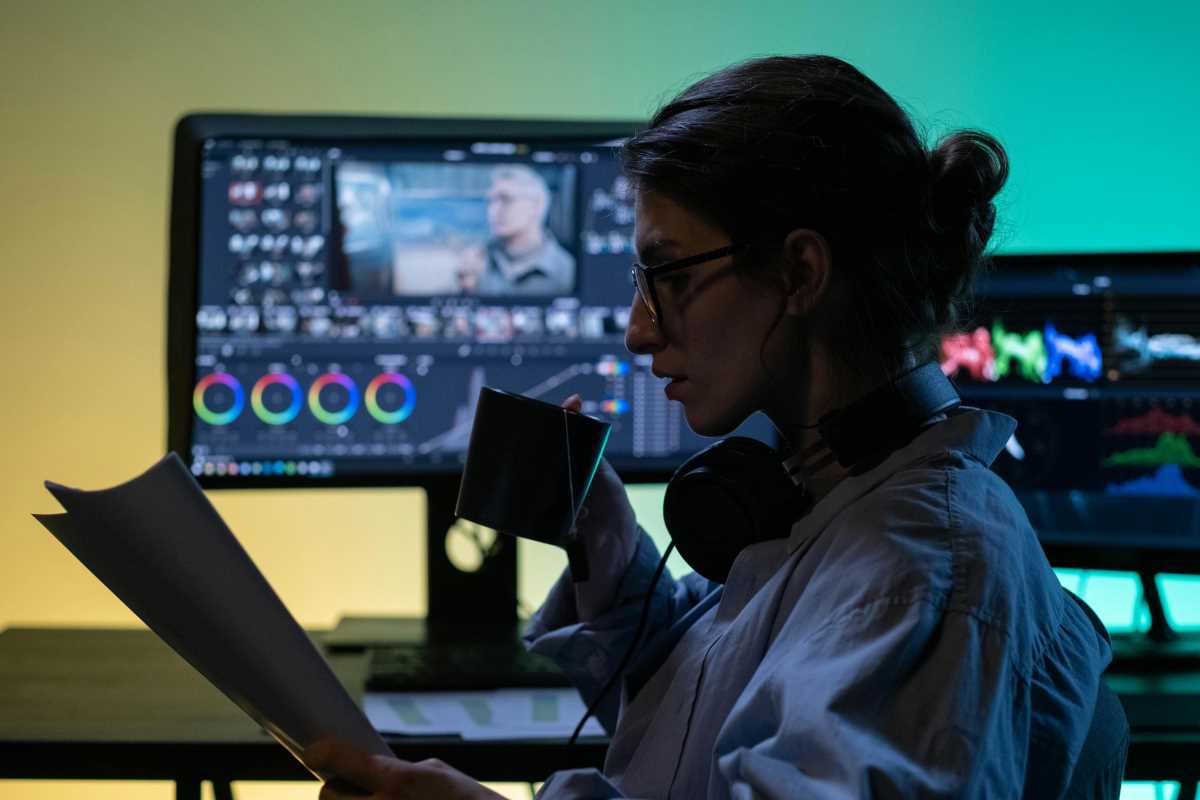For a Visual Effects (VFX) artist, a portfolio is the definitive representation of one's skill, artistic sensibility, and professional readiness. It is the primary instrument for securing consideration from major film studios. A meticulously curated portfolio communicates not only technical proficiency but also a sophisticated understanding of cinematic language and production workflows. The objective is to present a body of work that demonstrates an immediate capacity to contribute to high-caliber projects.
This guide provides a formal framework for constructing a VFX portfolio that meets the exacting standards of the film industry. It outlines the procedures for content curation, strategic presentation, and professional positioning required to capture the attention of studio recruiters. Adherence to these principles is essential for any artist aspiring to operate at the highest levels of the profession.
Curating High-Quality Portfolio Content
The efficacy of a portfolio is determined by the quality of its contents. Recruiters at major film studios evaluate a high volume of submissions; therefore, your work must demonstrate exceptional quality from the outset.
The Primacy of Quality Over Quantity
A portfolio containing three to five examples of outstanding, polished work is substantially more effective than one with a dozen mediocre pieces. Each project included must represent your absolute best effort. It is imperative to remove any work that is outdated, unfinished, or does not meet current industry standards. Your portfolio is only as strong as its weakest component.
Showcase Technical and Artistic Proficiency
Your portfolio must provide clear evidence of both technical skill and artistic judgment. This includes a demonstrated understanding of principles such as composition, color theory, timing, and physics. Whether your specialization is in compositing, lighting, modeling, or effects simulation, the work must feel integrated and believable within a cinematic context. A technically perfect shot that lacks artistic merit will not suffice.
The Importance of Breakdown Reels
A critical component for any VFX artist is the breakdown reel. This is a short video that deconstructs a final shot, revealing the individual layers and processes involved in its creation. A breakdown provides incontrovertible proof of your specific contribution to the work. It allows a recruiter to see the original plate, the elements you added, and the sequence of steps you took to achieve the final result. This transparency is highly valued and demonstrates a professional workflow.
Structuring the Professional Online Portfolio
The presentation of your work is as important as the work itself. An online portfolio must be professional, easily navigable, and optimized for a seamless viewing experience.
Selecting the Appropriate Platform
The platform you choose to host your portfolio serves as your digital gallery. It must be professional and reliable.
- ArtStation: This has become a de facto standard for many creative professionals in the film and game industries. Its clean interface, robust project presentation tools, and community features make it an ideal choice for showcasing high-resolution stills and detailed project breakdowns.
- Vimeo: For artists whose work is primarily motion-based, Vimeo is the preferred platform for hosting a demo reel. Its high-quality video player, password-protection options, and professional reputation make it superior to other video-sharing sites for this purpose. Many artists embed their Vimeo reels into a personal website or ArtStation profile.
- Personal Website: A dedicated website offers the greatest control over branding and presentation. Using a platform like Squarespace or Carbonmade, you can create a bespoke portfolio that reflects your professional identity. This is often the most sophisticated option.
Organization and Presentation
Clarity and logical structure are paramount. A recruiter should be able to understand your specialization and view your best work within seconds of arriving at your portfolio.
- Lead with Your Best Work: Your demo reel or strongest project should be the first item a visitor sees. Do not bury your most impressive work.
- Create Project-Specific Pages: Instead of a single, long scroll of images, organize your work into distinct projects. Each project should have its own page featuring the final shots, a breakdown video, and a concise description of your role and the software used.
- Provide Clear Contact Information: Your name, specialization (e.g., "Senior Compositor," "FX Artist"), and a professional email address must be immediately visible.
Tailoring Your Portfolio for Specific Studios
Studios possess unique visual styles, pipelines, and technical requirements. A generic, one-size-fits-all portfolio is less effective than one tailored to the specific needs of a target employer.
Before submitting an application, conduct thorough research on the studio. Analyze the type of work they produce. A portfolio submitted to a studio known for photorealistic creature work, such as Weta FX, should emphasize skills in modeling, texturing, and rigging. Conversely, an application to a studio like Industrial Light & Magic might benefit from showcasing a broader range of skills, including complex vehicle and environmental work.
Adjust the order and emphasis of the projects in your portfolio to align with the studio's known specialties. This demonstrates that you have done your due diligence and possess a genuine interest in contributing to their specific brand of filmmaking.
The Role of Networking and Collaboration
A portfolio demonstrates your skill, but it does not exist in a vacuum. Your professional network provides the context and opportunities for that portfolio to be seen.
Engage with the professional VFX community on platforms like LinkedIn. Follow studios and key artists, and participate in relevant discussions. Professional networking, when conducted with decorum, can lead to your work being noticed by recruiters and hiring managers.
Furthermore, collaborative projects can be a significant asset to your portfolio. Working with other artists on a short film or personal project not only helps you create more complex and impressive work but also demonstrates your ability to function as part of a creative team—a critical skill in any studio environment.
To attract the attention of premier film studios, a VFX artist must present a portfolio that is technically immaculate, artistically sophisticated, and professionally presented. By curating only your highest quality work, structuring it with strategic clarity, and tailoring it to the needs of your desired employer, you position yourself as a valuable and capable contributor to the future of cinematic arts.
 (Image via
(Image via





